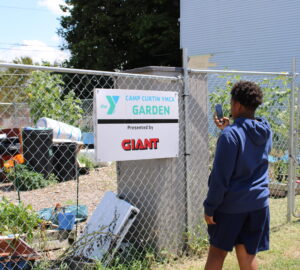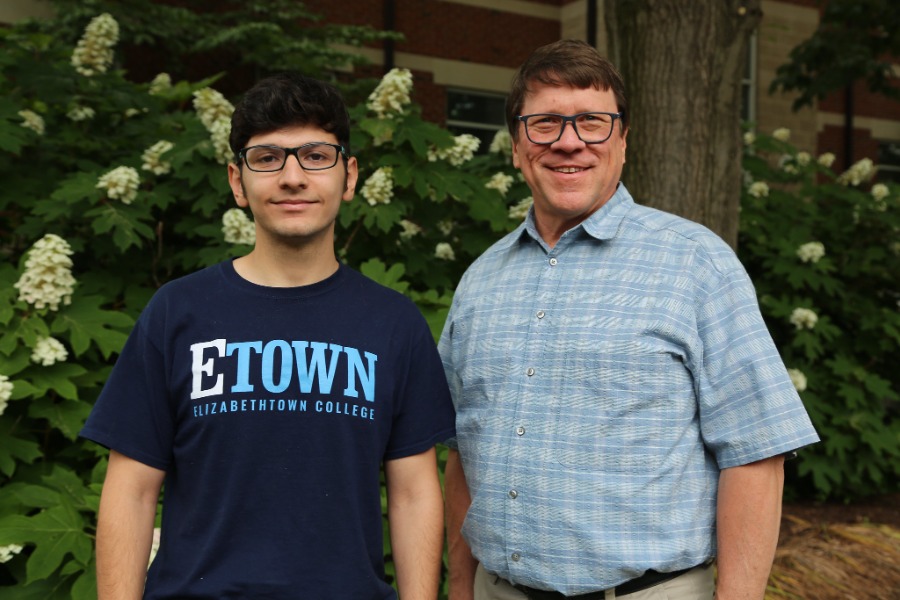Elizabethtown College Public Health student Samhar Almomani ’24 is collaborating with community members from Allison Hill in Harrisburg to study factors that impact Black adolescent youth in the area. Samhar is surveying youth to learn their perspectives on racial experiences, mental health, and neighborhood attachment while utilizing a technique known as “photovoice,” which will give those youth the chance to share their personal stories through daily photography.
The independent student research and collaboration with an Etown faculty mentor is part of the Summer Creative Arts and Research Program (SCARP) program.
Samhar’s research has been accepted into the upcoming American Public Health Association conference, which will take place from Nov. 6-9 in Boston, Ma. Samhar will present his findings in person alongside faculty mentor Robert Aronson.
Title of Research
Engaging African American Male Youth in Assessing Factors Affecting Their Own Health and Wellbeing: A Photovoice and Community Engagement Approach
Student Researcher
Samhar Almomani ’24 (Public Health major)
Faculty Mentor
Robert Aronson, Public Health Program Director and Lecturer
What are you researching?
Samhar: The inspiration for this project comes from the neighborhood of Allison Hill, a small neighborhood tucked away in Harrisburg that is plagued with detrimental factors, such as crime and drug use. My project, with the help of Dr. Aronson, extended to the greater Harrisburg district and focuses on adolescents between the ages of 14 to 19 and factors that negatively affect their wellbeing.
We are currently in the process of creating and sending out a survey for adolescents to answer questions related to racial biases, mental health and their community. We are already in contact with community partners, such as the boys and girls club and the YWCA, to help spread this survey.
The second part of the project will be an innovative photovoice approach that will allow the kids to take hold of issues pertaining to their communities. We will be providing cameras for each of the kids to capture their daily lives in the community and shine a light on both the positives and struggles of their communities. Then, we will combine the survey results with the photovoice images to create an exhibit that will be shared with policymakers, who we are already in contact with, in the city of Harrisburg.
Why did you choose this topic?
Samhar: The Harrisburg School District has lagging indicators relating to adverse factors that students have to go through in their daily lives. For example, students are more likely to not enjoy going to school and feel detached from their neighborhood. Therefore, we set out to give a platform for these students to voice their concerns directly to policymakers.
Research has shown that when kids feel like their work in a neighborhood is valued, their attachment to the neighborhood increases and has positive, long-term effects on the community. The photovoice exhibit will also offer other researchers insight into a budding technique of sharing data that may make science more accessible to the public.
What is the most interesting aspect of this research?
Samhar: The most interesting aspect is going through survey questions and composing my own survey to send out to adolescents in the community. The process of forming a survey with the help of community leaders taught me a lot about collaboration and working together for mutual benefit.
How has your faculty mentor helped you?
Samhar: Dr. Aronson has done this kind of research in similar communities in the past, so his experience was invaluable to my project, and he helped me come up with a research plan and establish connections in the Allison Hill community, where he is an active member. He also helped me create the survey and is guiding me through the photovoice exhibit.
Hear from the faculty mentor- Robert Aronson
“Some of the impetus for this type of work comes from early work I had done in Baltimore in the 1990s as well as work I did in Greensboro, N.C. from 2001-13,” Aronson said. “I was on the evaluation team of Baltimore City Healthy Start (a national demonstration project focused on infant mortality).
“As a spin-off of the project, a program was developed to support young men to be engaged in the lives of their children and supportive of their partners who were going through pregnancy. I did in-depth live histories with a group of these men and I was so impacted by the stories that they shared with me that I decided to devote the next 15 years to work on issues affecting the lives of African American men and boys.”

